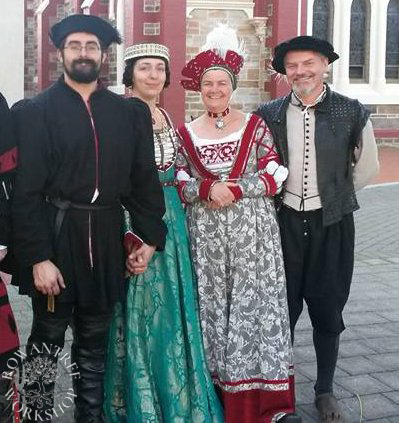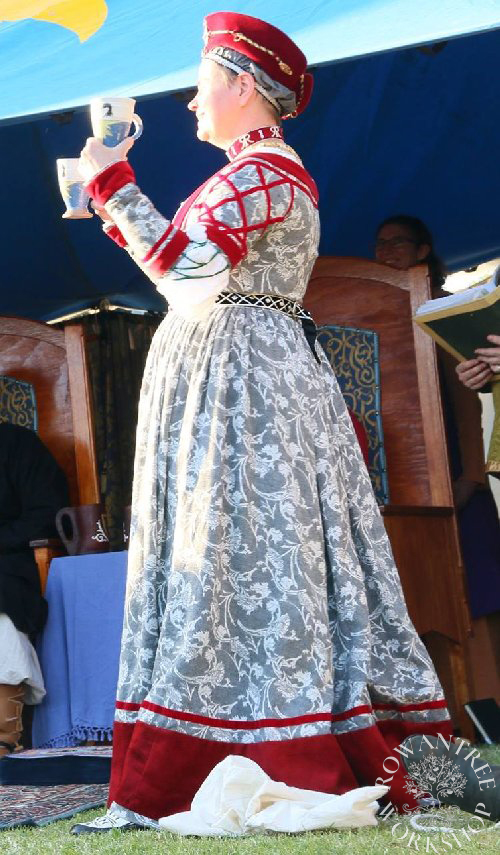An early 16th century German noblewoman’s gown, based on the Altarpiece of the Three Kings, by Hans Baldung Grien.
I first saw this painting on my trip to Germany in 1996 and loved it – the dark grey brocade with red and green trim was striking and so different to the usual gold brocades. I took some (slightly fuzzy) photos with the hope of making a version of the outfit, then looked for years for a suitable grey brocade, with no success.
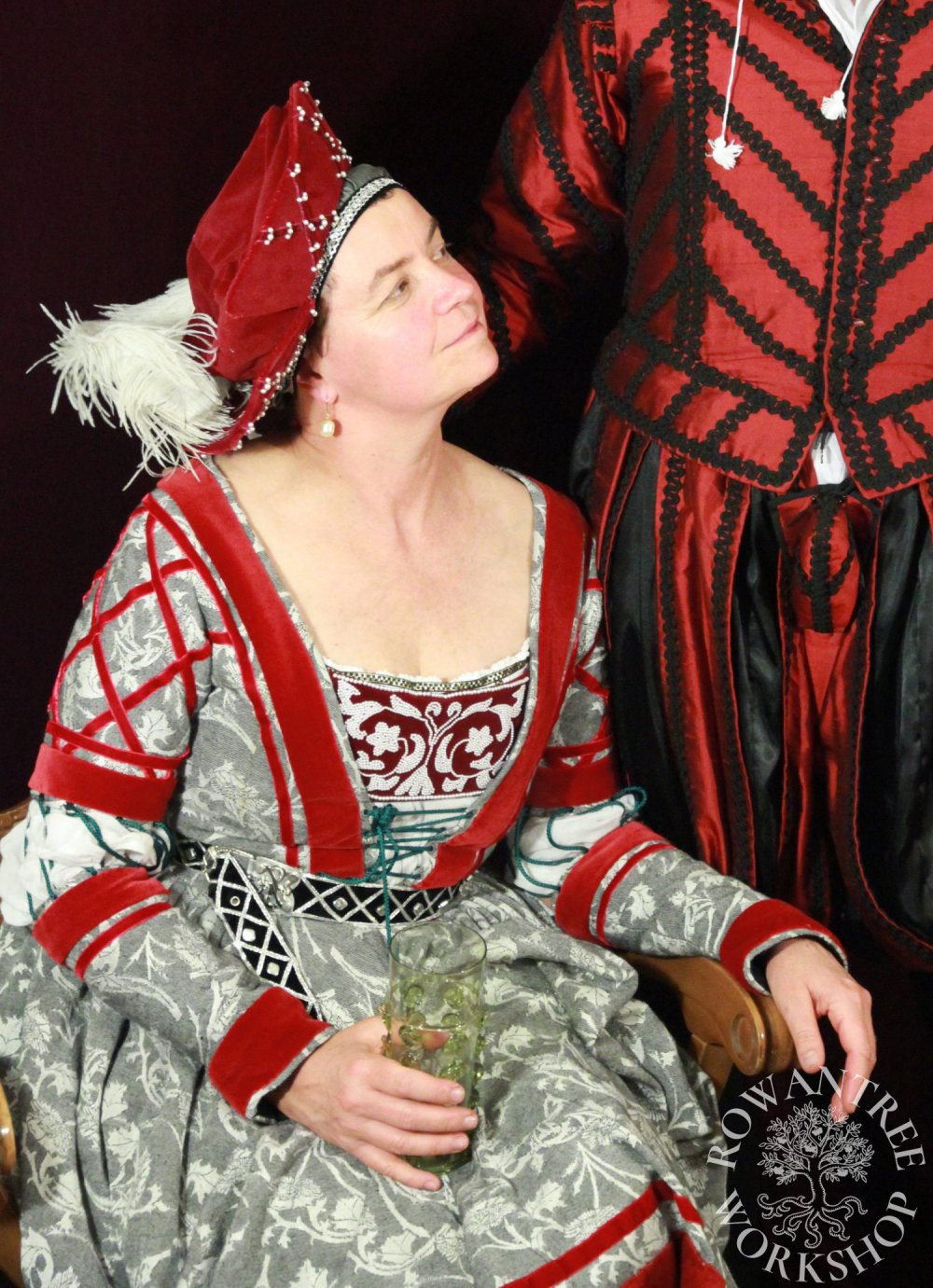
In 2010, I admired the petticoat worn by my friend Jessica at an event and asked where she had found the lovely silver grey brocade. She had bought it years ago – no chance to get more. Then at the end of the event, she handed me the skirt as a gift! There was 2.7m x 120cm straight pleated into a waistband of the same brocade. Maybe…?
Research & Design
This gown is inspired by the painting of St Agnes on the outer cover of the Altarpiece of the Three Kings, by Hans Sebald Grien, held in the Berlin Gemäldegalerie.
The bodice has a pearled Brustfleck similar to the archetypical ‘Cranach’ gowns worn by noble women in the first half of the 16th century, but this is an earlier form of the style. The green lacing goes through the edge of the bodice, and it comes to a V at the front.
Lucas Cranach the elder painted the Martyrdom of St Catherine altarpiece in the same year. The gowns worn by St Barbara and St Christina show the same aesthetic, with St Barbara in particular showing a very similar style.

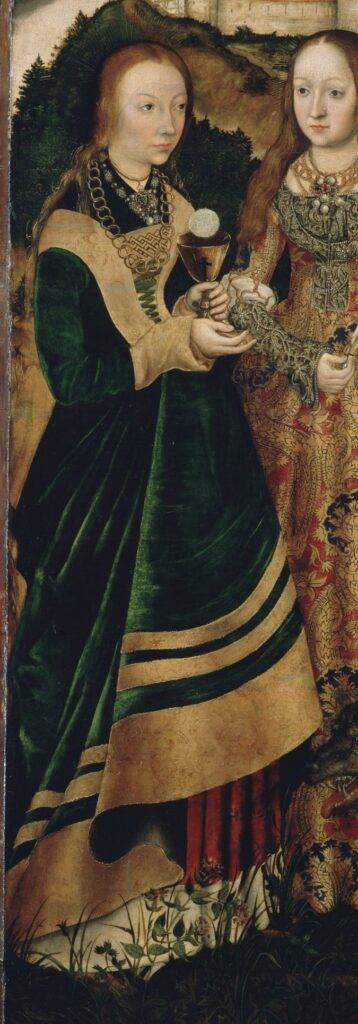
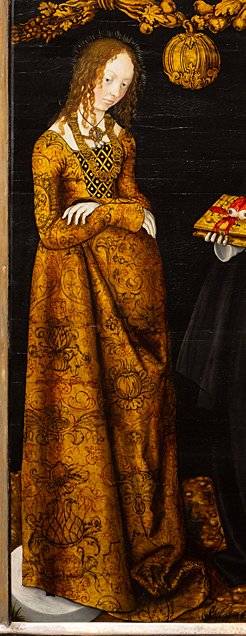
The brocade pattern in the painting is a sparse version of the typical ‘pomegranate’ design in dark grey on grey, and the drape suggests a heavy silk. My brocade was cotton and more a late 15thc Italian design, but was the closest fabric I had found.
The bodice, sleeves and skirt of St Agnes are decorated in red velvet bands of varying widths. The broad red bands on the skirt meant that I could use less grey brocade, by piecing around the bands. I had a small amount of lovely red velvet – enough for guardings on the bodice and sleeves, but not enough for the hem.
After a fruitless search to match it, I used some darker red upholstery velvet from stash – it had a slightly waled texture, but should not be too noticeable at the hem. I bought a 50m roll of red velvet ribbon from EM Greenfields. And I already had a lovely pearled Brustfleck made for me by Bess Haddon, my former apprentice.
Construction
I based the pattern of the bodice on my Teal Rock, but with a V front. The sleeve was also based on the Teal Rock, but without the slashes. Since I only had once chance at this, I made up a full trial bodice in waste fabric to test everything fit well.
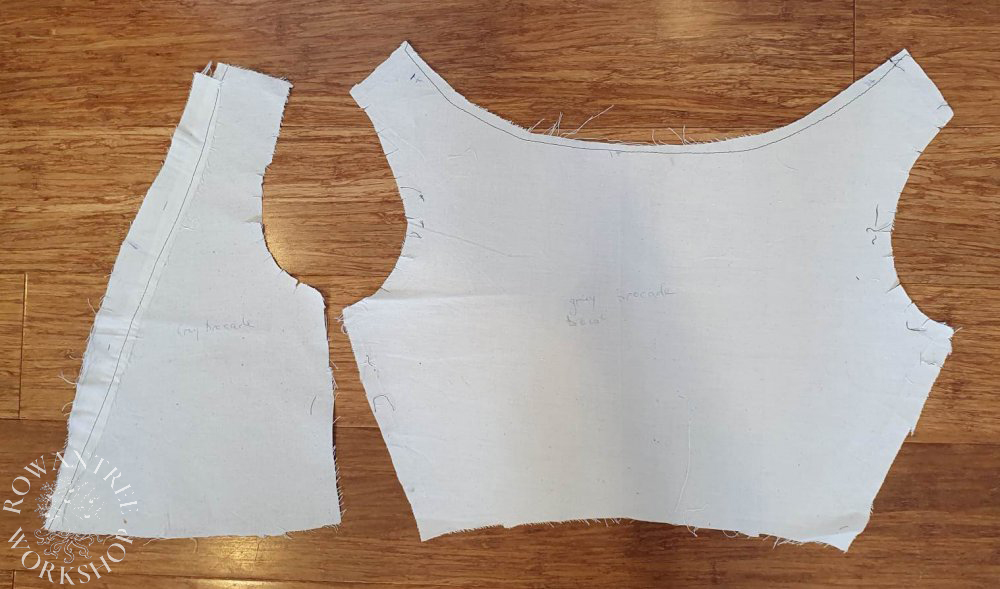
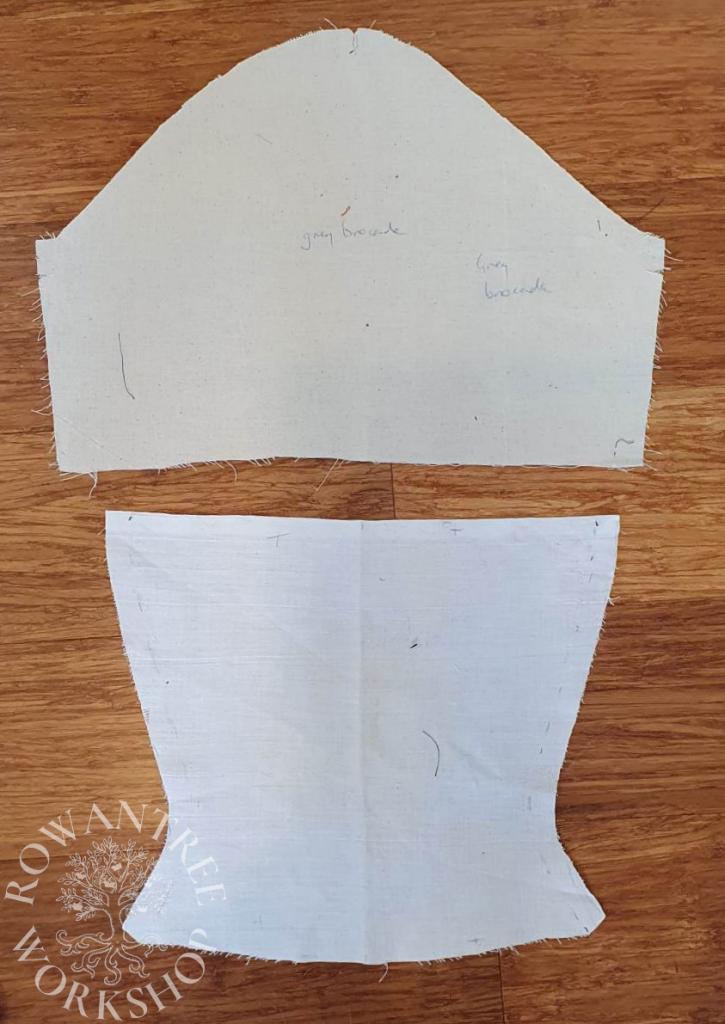
To maximise the skirt, I laid it out horizontally along the fabric, 3 panels top and tail, then tried to fit the bodice and sleeve sections in what was left, plus the unpicked waistband. Not quite…
Eventually I cut one lower sleeve piece from the base of a skirt panel (later pieced with scrap), then assembled the other lower sleeve from scrap. Luckily, the pattern disguises all this. I was thrilled that I managed a hem of 4.2m!
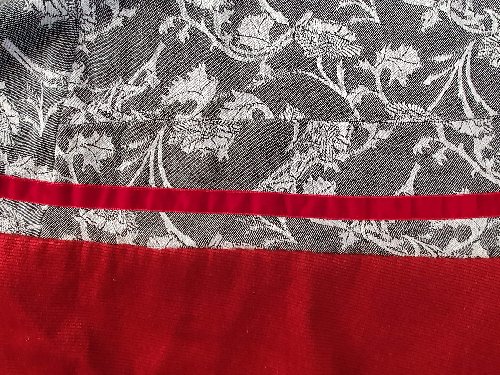
I made up the gown following my usual process at this time, with a heavy drill interlining and linen lining on the bodice. I inserted the upper sleeves and then basted on the ribbon fretwork to ensure it sat smoothly, before hand sewing it on with the bodice guarding. I lined the sleeves in linen.
Sewn eyelets were still in my future… Instead, I inserted small metal eyelets along the bodice front and sleeve sections and then over-sewed them with grey silk. I found some bright green flat braid for the lacing and formed a brass aglet on the end, for easy lacing.
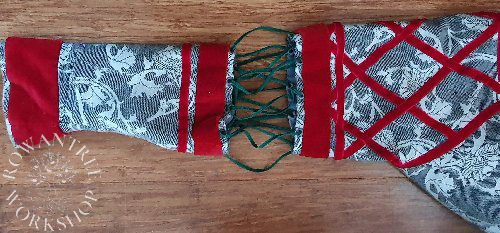
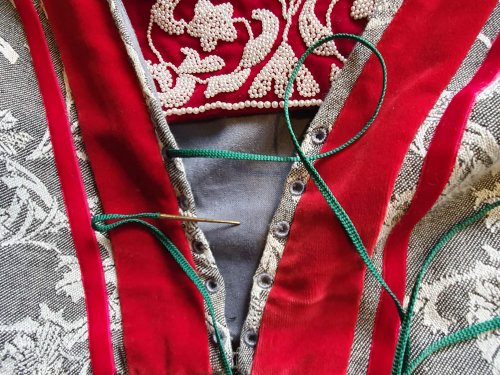
Accessories
For the distinctive belt, I went with silver rather than the pale gold original. I sewed flat silver braid onto a strip of black velvet ribbon, then added some lozenge shaped beads (a bit thick, but a good shape). I backed the belt with a strip of satin and used another jewellery fitting for the chape end.
Searching around for anything thin and silver to use for the buckle plate, I eventually used some roof flashing (from our ongoing renovations), with an old nickel belt plaque riveted on to add a pseudo cast decoration. Definitely stage costume, but looks surprisingly effective.
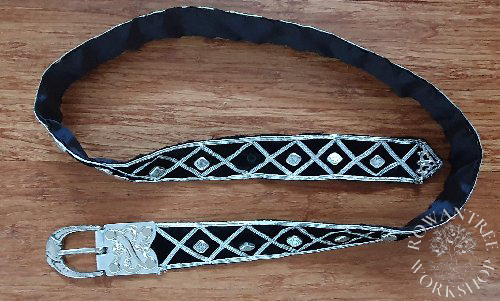
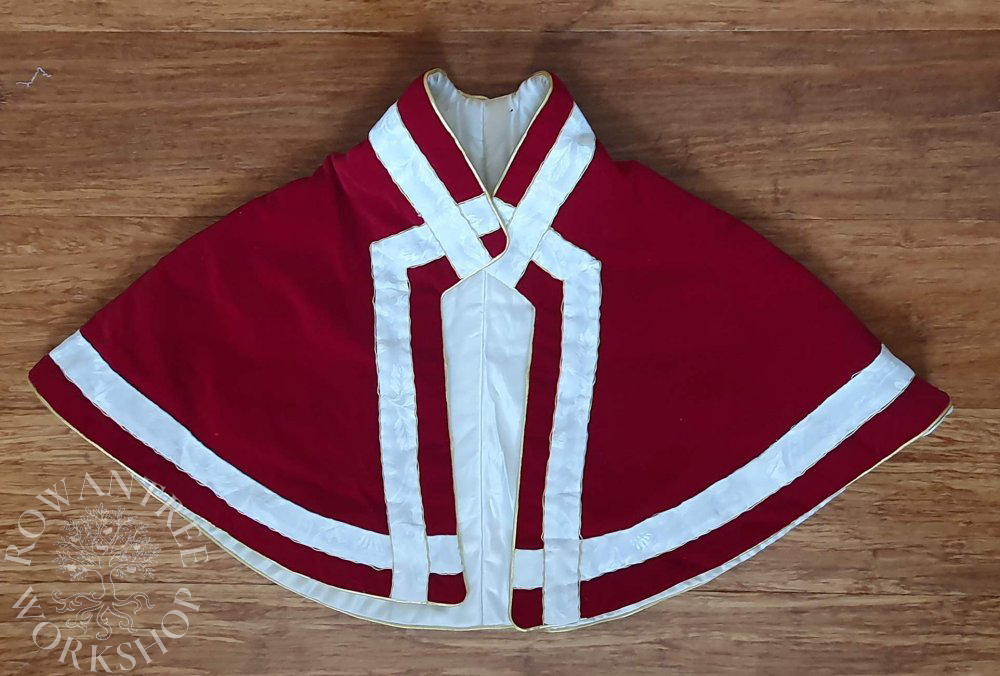
I planned to make the atypical hat, but in the meantime, I had several red Baretten which worked well with the outfit, although a little later in style. I also made a red velvet Goller for cooler weather, interlined with wool and lined in silk, using the pattern from my black velvet one.
I was so pleased with how this outfit turned out. I have worn it a great deal over the years and it still hangs in my active wardrobe.
